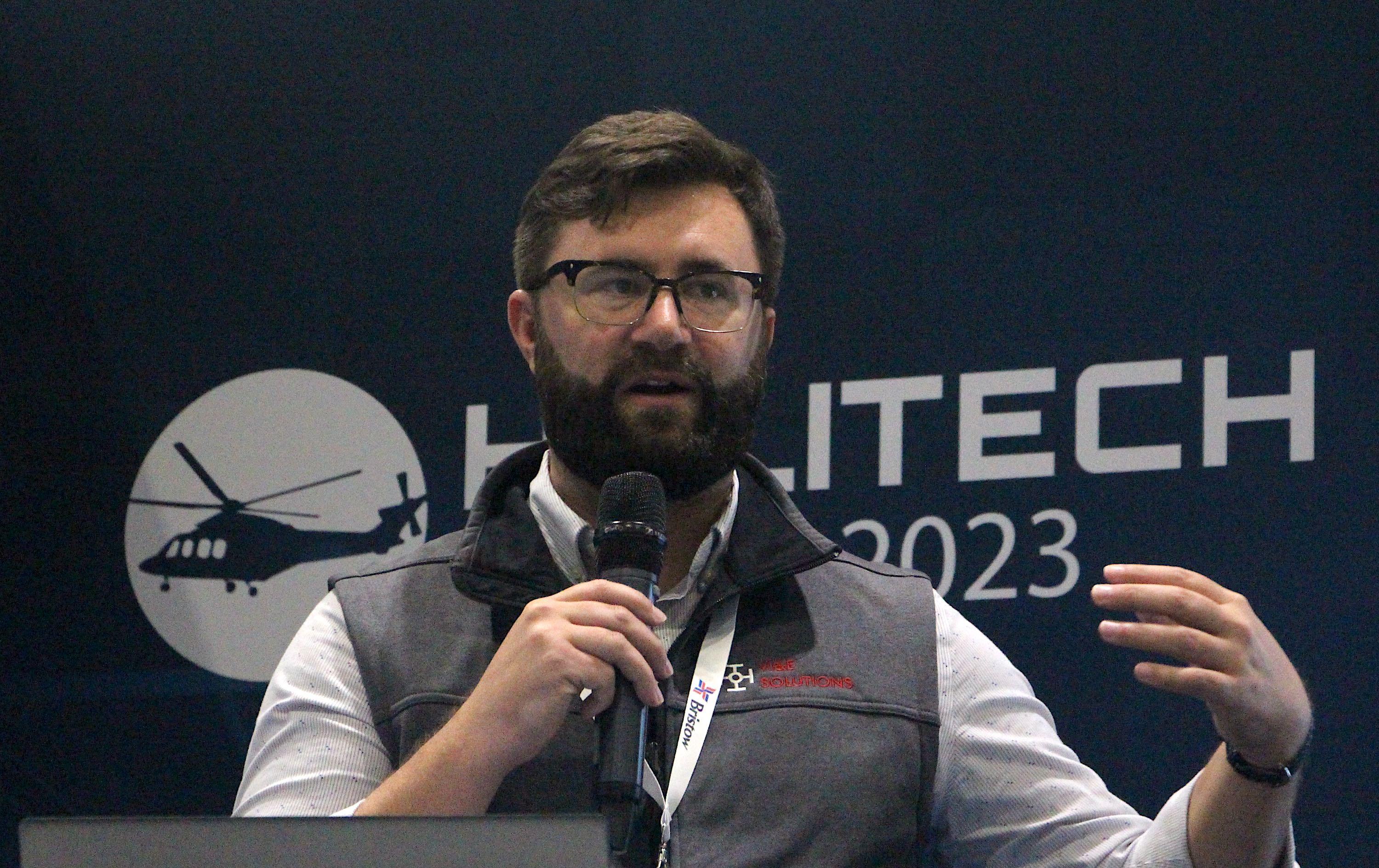
Volatus CEO Dan Sloat.
LONDON—In 1962, then-U.S. President John F. Kennedy famously said his country’s decision to send humans to the Moon was made “not because [it was] easy, but because [it was] hard.”
The same logic has been applied by Volatus Infrastructure and Energy Solutions in its selection of Wittman Regional Airport in Oshkosh, Wisconsin, as the site of the first of what the company hopes will become a dense global network of highly localized vertiports capable of hosting passenger flights by electric-vertical-takeoff-and-landing (eVTOL) vehicles.
“We didn’t start here because it was easy. We started here in fact because it’s arguably the most difficult airport in the entire U.S. market,” CEO Dan Sloat told the Helitech/DroneX/AAM Expo here Sept. 27. The otherwise quiet Wittman hosts the annual EAA AirVenture event and thus becomes “the single busiest airport in the entire United States” for one week each summer, he says. But that is not the only reason why the task is particularly challenging.
“For 41 U.S. states, you’ll just work with the FAA directly,” Sloat says. “But nine states are known as block grant states, where you have to work with the DOT [U.S. Department of Transportation] directly, which oversees the FAA. They have the authority to provide the permissions necessary to install a vertiport, and yet they lack a lot of that subject-specific expertise. So if it is one of those nine states—and Wisconsin is one of them—it will be an uphill battle.”
The rules, regulations and parameters within which vertiports will operate are all works in progress. So an applicant can find it difficult to get quick and definitive answers to some of the questions that a proposed installation will raise, even in the simplest use cases. But the process of obtaining approvals in block grant states is extended and made more complicated by the differently layered authority.
“It’s like a child first approaching their mother—we’ll say the FAA—[who] for whatever reason decid[es], ‘Hey, I’m too busy. Go ask your father,’ that being the DOT,” Sloat says. “They certainly have the authority—they can issue these permissions—but it’s on a subject that they know very little about. And they’re honestly worried that when mom comes back, they’ll have made the wrong decision. If they approve these vertiports without having crossed all the t’s and dotted all the i’s, they will be then accountable for any safety issues that take place thereafter.”
Another complication comes with the requirement to compile, submit and gain approval for a deconfliction report, which considers “every possible safety issue that may arise,” Sloat says. For Oshkosh, the company has prepared two iterations but has not yet heard whether its work has been deemed complete and sufficient.
“Unfortunately, there is no deadline,” Sloat says. “As soon as we submit our part, DOT is not obligated to get us an answer for corrections [within] any period of time. There’s really no way to estimate exactly how long that portion of this process will take.”
Assuming the deconfliction report eventually receives the green light, Volatus can apply for municipal approvals, a process Sloat says “should take six-18 months.” Construction of the company’s off-the-shelf design can be completed in weeks.
An assessment of available on-site power and energy will not take long but will be critical to the installation’s success, he says. It is likely that most potential vertiport host sites will lack sufficient power to carry out rapid recharging of multiple eVTOLs. Access to the necessary electricity supply from national grids will also be limited, if it is available at all. So it may be necessary to build a power station or a solar or wind farm, if the local climate can support electricity production year round.
“We feel that energy generation is going to be so important that we almost go into it assuming that many of these vertiports will need to provide their own,” Sloat says. “Some communities actually don’t allow electricity to be sold at the charging-station level, so we may have to be a bit creative about how we approach that as well.”
Sloat credits efforts by the General Aviation Manufacturers Association (GAMA) for having helped to build consensus that in North America at least, the Combined Charging System standard, widely used in electric road vehicles, will be employed by the vast majority of aircraft OEMs. Volatus will use a universal charging station at its vertiports, so it is confident that it can host most eVTOLs likely to reach the U.S. marketplace. But the company will need to watch what global standards are adopted.
“Because of its more local and regional use cases, it’s unlikely an eVTOL will have a different charging standard at its origin and its destination,” Sloat says. “So we’ll have a pretty good sense of what all of the incoming eVTOLs will need, but we will have to make sure it’s compatible with home nation requirements.”
Despite all the complicating factors, Sloat says Volatus hopes to have its Wittman vertiport open in time for EAA AirVenture in 2024. And the company is confident that if it can succeed in Oshkosh, the task will be easier almost everywhere else.





